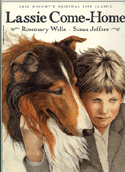


TOWARDS DIGITAL STORYTELLING FOR CHILDREN
THE EVOLUTION OF STORYTELLING FROM THE MIDDLE AGES
- Middle Ages - Oral Tradition
- 1400-1500's - Instruction
- 1600's - Enjoyable Learning
- 1700's - Introduction of Adventure
- 1800's - Storytelling that Delights
- 1900's - Too Much, Too Fast
- 1970's - Multimedia Mix
Links
Links will be provided for key words and ideas in the essay. They are marked with an asterisk in the text but can only be accessed from the link column.
Picture Books
1900's: Too Much, Too Fast
And so came the best of times and the worst of times. In the 1920's, "Children's Book Week" was established at the encouragement of the American Book Sellers Association. This event, plus the establishment of the "John Newbery Medal" for the "Most Distinguished Contribution to American Literature for Children" by the American Library Association, helped create a larger demand for children's literature and resulted in its exponential growth. Many publishing houses created children's divisions within their companies to deal with the profitable new growth area and responded to the demand by deluging the marketplace with books.


The major technological change of the times was the development of the offset press. This process allowed color books to be printed relatively inexpensively in large quantities. Traditional children's literature took on a new outward form. The picture book, which had always had a presence in the narrative world, created its own genre wherein the writer and illustrator have equal place. The picture book became a mainstay of the children's book publishing industry. (This type of collaborative effort of writer and illustrator is also critical in the development of Hypertext.)